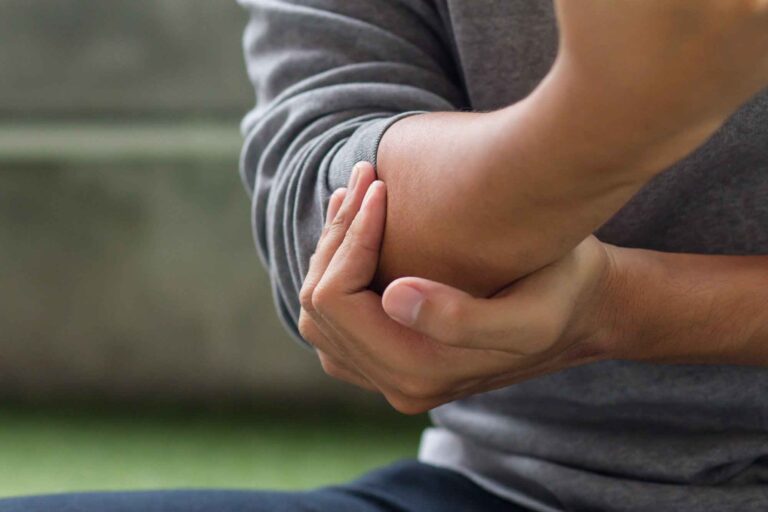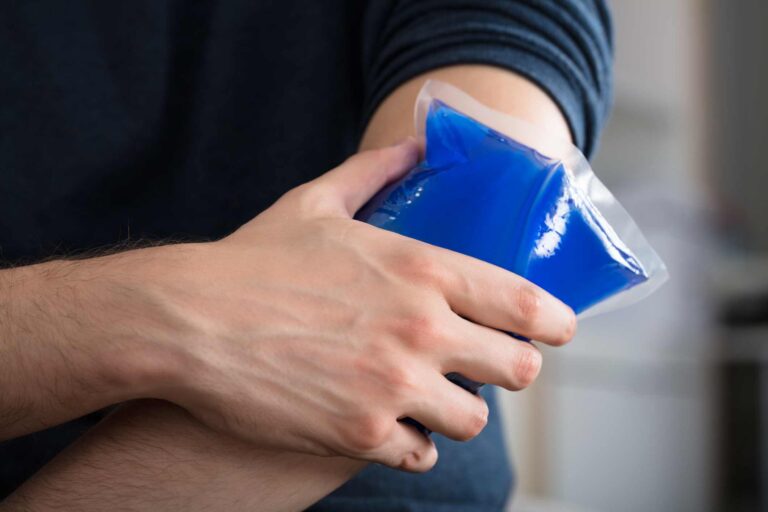Tennis elbow, also known as lateral epicondylitis, is a condition that causes pain and tenderness on the outer part of the elbow. Despite its name, tennis elbow is not limited to tennis players and can affect anyone who engages in repetitive activities that involve the forearm and wrist, such as painting, cooking, or typing. In this article, we will discuss what tennis elbow is, what causes it, and the available treatments.
WHAT IS TENNIS ELBOW?
Tennis elbow is a form of tendinitis, which is inflammation or irritation of the tendons that attach muscles to bones. The tendons affected in tennis elbow are the ones that attach to the lateral epicondyle, the bony bump on the outer part of the elbow. The pain from the tennis elbow can be sharp or dull and may worsen when performing activities that involve gripping, lifting, or twisting the wrist.

WHAT CAUSES TENNIS ELBOW?
The primary cause of tennis elbow is overuse of the forearm muscles and tendons. This overuse can result in small tears in the tendons that lead to inflammation and pain. Activities that involve repetitive motions of the forearm and wrist, such as tennis, golf, or typing, can contribute to the development of tennis elbow. However, it can also be caused by non-sport-related activities, such as painting, gardening, or cooking.
In addition to overuse, other factors that may increase the risk of developing tennis elbow include age, gender, and certain medical conditions. Tennis elbow is more common in people aged 30 to 50 and is more prevalent in men than women. Medical conditions that affect the tendons, such as rheumatoid arthritis or diabetes, can also increase the risk of developing tennis elbow.
WHAT TREATMENTS ARE AVAILABLE?
The treatment for tennis elbow depends on the severity of the condition and may include a combination of non-surgical and surgical options.
Non-surgical treatments for tennis elbow include :
- Rest and Ice:- Resting the affected arm and applying ice to the elbow can help reduce pain and inflammation.
- Physical Therapy:- A physical therapist can design an exercise program that strengthens the muscles and tendons in the forearm and wrist.
- Brace or Splint:- Wearing a brace or splint can help support the elbow and reduce the strain on the tendons.
- Medications:- Over-the-counter pain medications, such as ibuprofen or acetaminophen, can help reduce pain and inflammation.
- Corticosteroid Injections:- A corticosteroid injection can be administered directly into the affected area to reduce pain and inflammation.
SURGICAL TREATMENTS FOR TENNIS ELBOW INCLUDE
- Open Surgery:- In severe cases of tennis elbow, open surgery may be necessary to remove damaged tissue and reattach healthy tissue to the bone.
- Arthroscopic Surgery:- Arthroscopic surgery involves making small incisions in the elbow and using a tiny camera to guide surgical instruments. This minimally invasive approach can reduce the risk of complications and shorten the recovery time.
PREVENTION OF TENNIS ELBOW
Prevention of tennis elbow can involve taking breaks from repetitive activities, using proper technique when performing activities that involve the forearm and wrist, and strengthening the muscles in the forearm and wrist.

In conclusion, tennis elbow is a common condition that can cause pain and tenderness on the outer part of the elbow. It is typically caused by overuse of the forearm muscles and tendons and can be aggravated by repetitive activities that involve the forearm and wrist. Treatment options include rest, ice, physical therapy, bracing, medications, and surgery, depending on the severity of the condition. Prevention measures can involve proper technique, taking breaks, and strengthening the forearm and wrist muscles. If you are experiencing pain in your elbow, it’s important to consult with a healthcare professional to determine the cause and appropriate treatment options. Early intervention can help prevent the condition from worsening and potentially leading to more severe pain and disability.
Learn about tennis elbow, its causes, symptoms, diagnosis, and treatment options in this brief overview. Protect yourself from this common overuse injury, whether you’re a tennis player or not. To book an appointment with Specialty Care Clinics call (469) 545-9983.
